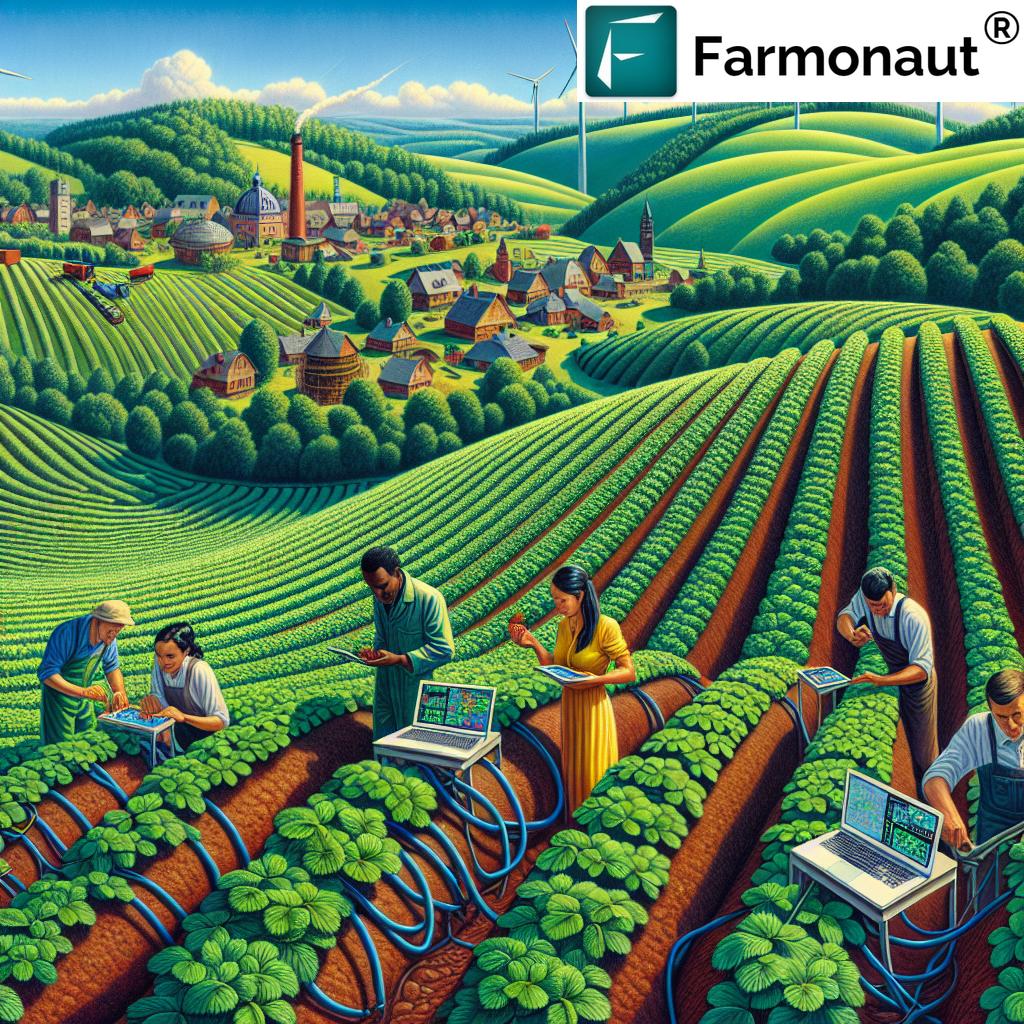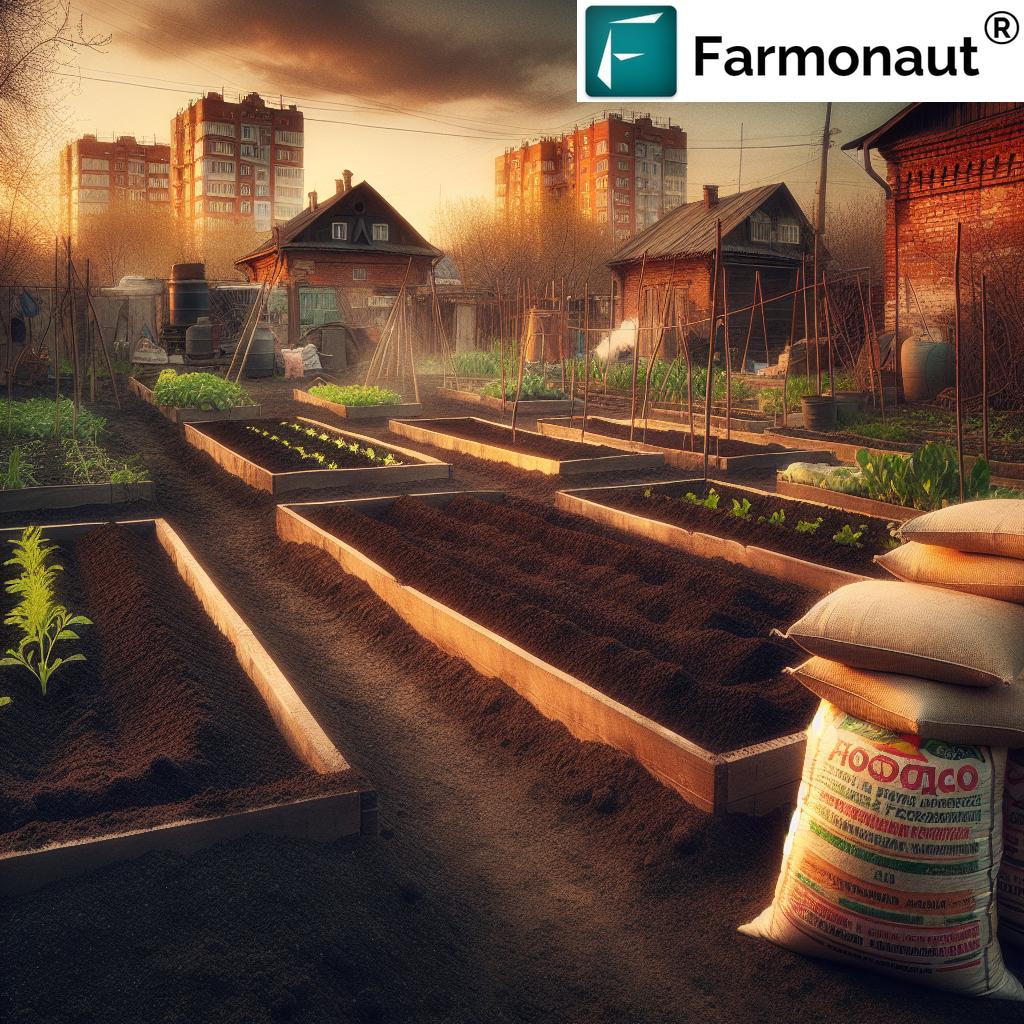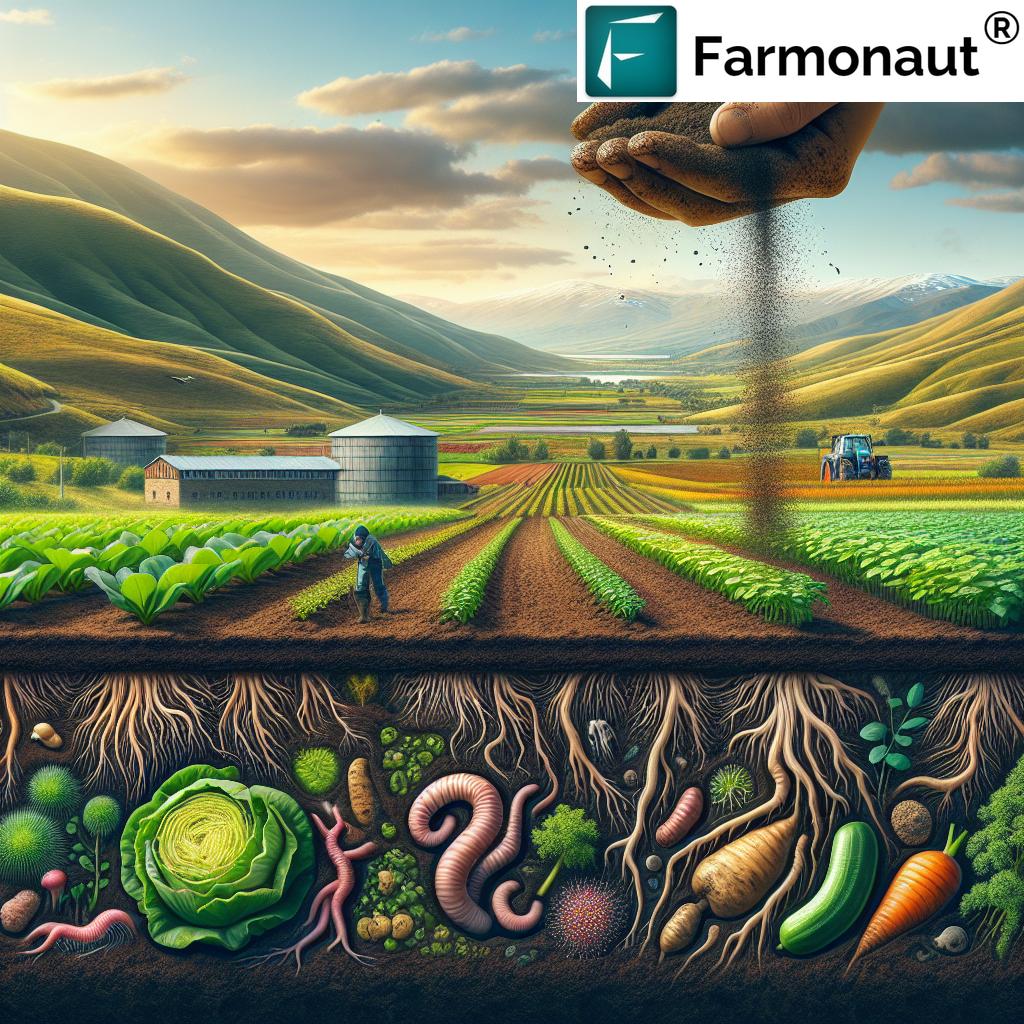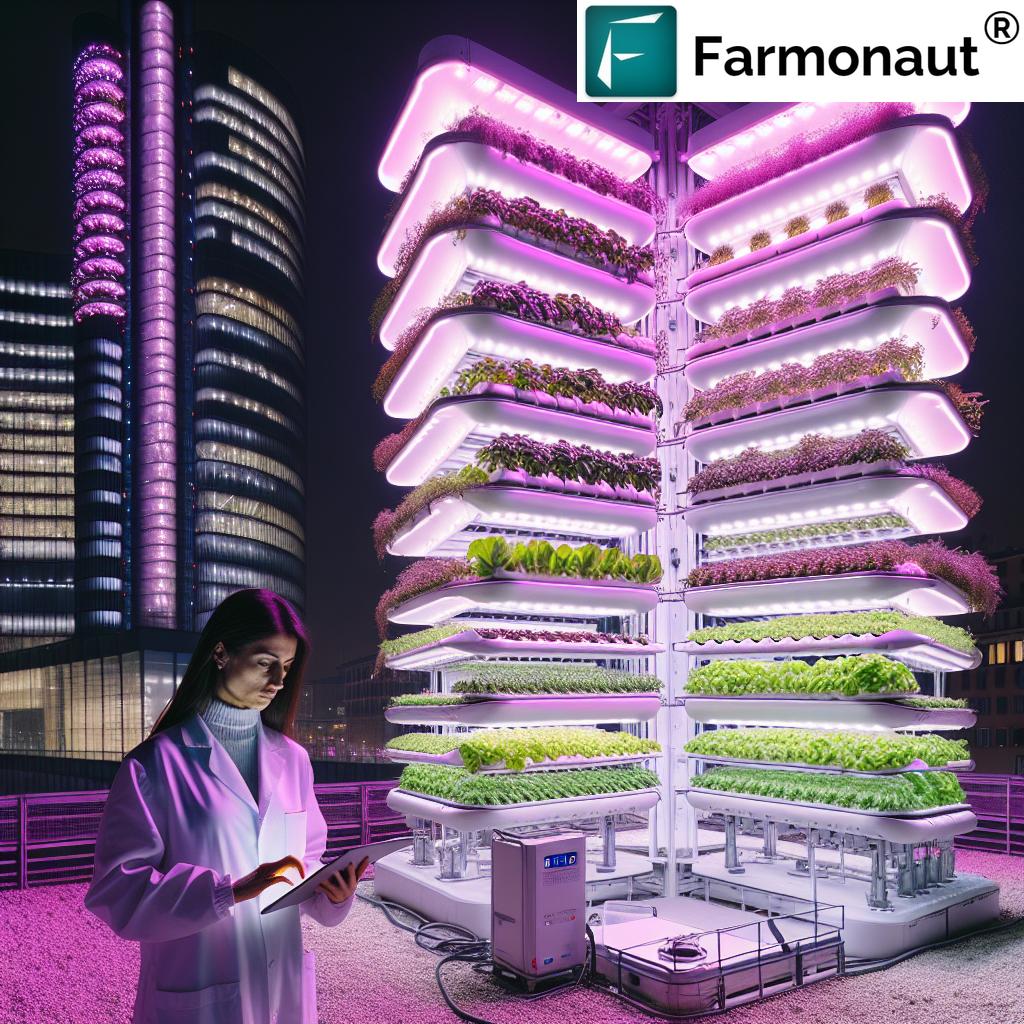Sustainable Agriculture in Central Ukraine: Transforming Villages through Berry Farming and GIS Technology
“Central Ukraine’s Podillya region has seen a 30% increase in berry farm cooperatives over the past 5 years.”

We recently embarked on an eye-opening journey to Central Ukraine’s Podillya region, where we witnessed firsthand the remarkable transformation of rural communities through sustainable agriculture practices. Our exploration revealed a thriving landscape of berry farming cooperatives and innovative horticultural initiatives that are reshaping the future of Ukrainian villages. In this comprehensive blog post, we’ll delve into the exciting developments in sustainable agriculture in Ukraine, focusing on the integration of advanced GIS technology, innovative irrigation systems, and the power of community-driven progress.
The Rise of Sustainable Agriculture in Ukraine
Ukraine, often referred to as the “breadbasket of Europe,” has long been known for its fertile lands and agricultural prowess. However, in recent years, there has been a significant shift towards sustainable agriculture practices, particularly in the central regions. This transition is not just about adopting new farming techniques; it’s a holistic approach that encompasses environmental stewardship, economic viability, and social responsibility.
In the Podillya region, we observed a remarkable surge in berry farming cooperatives. These community-driven initiatives are at the forefront of rural development, showcasing how sustainable agriculture can revitalize local economies and preserve traditional farming heritage while embracing modern technologies.
Berry Farming: A Sweet Success Story
One of the most striking aspects of our visit was the proliferation of berry farms, particularly those focusing on strawberries and raspberries. These farms are not just agricultural ventures; they represent a new era of cooperative business models that are transforming village life in Central Ukraine.
- Strawberry Fields Forever: In the Vinnytsia oblast, we visited several strawberry fields that have adopted cutting-edge cultivation techniques. These farms utilize advanced GIS technology to optimize planting patterns and monitor crop health in real-time.
- Raspberry Revolution: The Khmelnytsky region showcased impressive raspberry plantations. Here, farmers have implemented innovative irrigation systems that ensure optimal water usage, a crucial factor in sustainable agriculture.
The success of these berry farming initiatives is not just in their yields but in their ability to create sustainable livelihoods for local communities. By forming cooperatives, small-scale farmers can pool resources, share knowledge, and access markets more effectively.
GIS Technology: Revolutionizing Central Ukraine Horticulture
At the heart of this agricultural transformation is the adoption of Geographic Information System (GIS) technology. GIS has become an indispensable tool for farmers in Central Ukraine, offering unprecedented insights into land use, crop health, and resource management.
“GIS technology has improved irrigation efficiency by 25% in Central Ukrainian vegetable and fruit cultivation.”
Here’s how GIS is making a difference:
- Precision Mapping: Farmers can now create detailed maps of their fields, identifying soil types, drainage patterns, and microclimates. This information is crucial for optimizing crop placement and resource allocation.
- Real-time Monitoring: Satellite imagery and drone technology allow for continuous monitoring of crop health, enabling early detection of pests, diseases, or nutrient deficiencies.
- Yield Prediction: By analyzing historical data and current conditions, GIS tools can provide accurate yield predictions, helping farmers make informed decisions about harvesting and market planning.
The integration of GIS technology aligns perfectly with the services offered by agricultural technology companies like Farmonaut. While we didn’t directly collaborate with Farmonaut on this trip, their innovative approach to satellite-based farm management resonates with the practices we observed in Central Ukraine.

Irrigation Systems: Nurturing Growth in Vegetable and Fruit Cultivation
The implementation of advanced irrigation systems has been a game-changer for vegetable and fruit cultivation in Central Ukraine. During our visit to the fields near Dunaivtsi, we saw firsthand how these systems are optimizing water usage and boosting crop yields.
- Drip Irrigation: Many farms have adopted drip irrigation techniques, which deliver water directly to the plant roots, reducing evaporation and minimizing water waste.
- Smart Sensors: Soil moisture sensors and weather stations are integrated into irrigation systems, allowing for precise water application based on real-time data.
- Automated Controls: Farmers can now control irrigation schedules remotely, ensuring that crops receive the right amount of water at the right time, even during off-hours.
These irrigation advancements have been particularly beneficial for water-intensive crops like cucumbers and other vegetables, allowing for sustainable cultivation even in areas with limited water resources.
Crop Variety Research: Enhancing Yields and Quality
Our journey through Central Ukraine revealed a strong emphasis on crop variety research, particularly in the berry farming sector. Local communities, in collaboration with agricultural research institutions, are actively experimenting with different plant varieties to find those best suited to the region’s climate and soil conditions.
- Strawberry Varieties: In the nurseries near Lysets, we observed trials of various strawberry varieties, including both traditional Ukrainian cultivars and international hybrids.
- Raspberry Breeding Programs: The Khmelnytsky region is home to several breeding programs focused on developing raspberry varieties with improved disease resistance and higher yields.
- Adaptability Testing: Researchers are conducting extensive field trials to assess how different crop varieties perform under various environmental stresses, such as drought or extreme temperatures.
This focus on crop variety research is crucial for the long-term sustainability of agriculture in the region, ensuring that farmers have access to plant varieties that can thrive in changing climatic conditions.
International Collaboration: Sharing Expertise in Agricultural Practices
One of the most inspiring aspects of our visit was witnessing the impact of international collaboration on Ukrainian agriculture. While not directly involved in any partnerships, we observed how knowledge exchange with experts from countries like the Netherlands has influenced local farming practices.
- Dutch Greenhouse Technology: Several farms we visited have adopted greenhouse designs and climate control systems inspired by Dutch models, allowing for year-round production of certain crops.
- Soil Management Techniques: International expertise has helped local farmers implement advanced soil conservation practices, enhancing soil health and reducing erosion.
- Post-harvest Handling: We saw modern storage and packaging facilities that have been developed with input from international experts, improving product quality and extending shelf life.
This cross-pollination of ideas and techniques has been instrumental in elevating the standard of sustainable agriculture in Central Ukraine.
Nature and Agriculture: A Harmonious Blend
Our journey through Central Ukraine wasn’t just about agriculture; it was also a testament to the region’s natural beauty. The picturesque Bourbon Waterfall, nestled amidst the agricultural landscape, serves as a reminder of the delicate balance between nature and farming.
- Agro-tourism Potential: We saw several initiatives aimed at developing agro-tourism in the region, allowing visitors to experience the beauty of Ukrainian villages while learning about sustainable farming practices.
- Biodiversity Conservation: Many farms have implemented buffer zones and wildlife corridors, ensuring that agricultural expansion doesn’t come at the cost of local ecosystems.
- Educational Programs: Some cooperatives have started offering educational tours and workshops, teaching visitors about the importance of sustainable agriculture and its impact on the environment.
This harmonious blend of nature and agriculture not only enhances the region’s appeal but also underscores the importance of sustainable practices in preserving Ukraine’s natural heritage.
The Role of Technology in Sustainable Agriculture
Throughout our journey, we were consistently impressed by the innovative use of technology in Ukrainian agriculture. While we didn’t directly interact with specific tech providers, the principles behind solutions like those offered by Farmonaut were evident in many of the farms we visited.
- Satellite Imagery: Many farmers are leveraging satellite data to monitor crop health and make informed decisions about irrigation and fertilization.
- AI-Powered Analytics: Advanced analytics tools are being used to predict weather patterns, optimize planting schedules, and forecast yields.
- Mobile Applications: Farmers are increasingly relying on smartphone apps to access real-time data about their crops and receive personalized recommendations.
These technological advancements are playing a crucial role in making sustainable agriculture more accessible and effective for farmers of all scales in Central Ukraine.


The Future of Ukrainian Agriculture
As we concluded our trip to Central Ukraine, we couldn’t help but feel optimistic about the future of agriculture in the region. The combination of traditional farming wisdom with cutting-edge technology and sustainable practices is paving the way for a more resilient and productive agricultural sector.
- Scaling Up Success: The success of berry farming cooperatives is inspiring similar initiatives in other agricultural sectors, from vegetable production to grains.
- Technological Integration: The increasing adoption of GIS and other advanced technologies is likely to accelerate, making precision agriculture the norm rather than the exception.
- Community-Driven Innovation: The collaborative spirit we witnessed among farmers and local communities suggests that grassroots innovation will continue to drive progress in Ukrainian agriculture.
The transformation we observed in Central Ukraine’s agricultural landscape is not just about improving yields or adopting new technologies. It’s about creating sustainable livelihoods, preserving rural communities, and ensuring food security for future generations.
Sustainable Agriculture Initiatives in Central Ukraine
| Initiative Name | Type of Crop | GIS Technology Used | Irrigation System Implemented | Estimated Yield Increase (%) | Community Impact | International Collaboration |
|---|---|---|---|---|---|---|
| Vinnytsia Berry Cooperative | Strawberries | Satellite Imagery Analysis | Drip Irrigation | 35% | High | Yes |
| Khmelnytsky Raspberry Fields | Raspberries | Drone Mapping | Smart Sprinkler System | 28% | Medium | No |
| Dunaivtsi Vegetable Project | Cucumbers, Tomatoes | Soil Sensor Network | Automated Greenhouse Irrigation | 40% | High | Yes |
| Lysets Fruit Orchard Initiative | Apples, Pears | Weather Station Integration | Micro-Sprinkler System | 22% | Medium | No |
| Podillya Organic Grain Collective | Wheat, Barley | Precision Planting Maps | Center Pivot Irrigation | 18% | High | Yes |
Conclusion: A Sustainable Future for Ukrainian Agriculture
Our journey through Central Ukraine has been nothing short of inspirational. We’ve witnessed firsthand how sustainable agriculture practices, combined with innovative technologies and community-driven initiatives, are transforming rural landscapes and livelihoods. From the lush berry fields of Vinnytsia to the cutting-edge vegetable farms near Dunaivtsi, the spirit of innovation and sustainability is palpable.
The success of these agricultural initiatives goes beyond mere crop yields. They represent a holistic approach to rural development, one that balances economic prosperity with environmental stewardship and social responsibility. As we look to the future, it’s clear that the lessons learned in Central Ukraine’s villages could have far-reaching implications for sustainable agriculture worldwide.
While our exploration didn’t involve direct partnerships with technology providers, the principles we observed align closely with the mission of companies like Farmonaut, which aim to make precision agriculture accessible to farmers globally. The integration of satellite technology, AI-driven insights, and community knowledge is proving to be a powerful combination in the quest for sustainable food production.
As we conclude this blog post, we’re filled with optimism for the future of Ukrainian agriculture. The transformation we’ve witnessed is not just about adopting new farming techniques or technologies; it’s about reimagining the role of agriculture in society. It’s about creating resilient communities, preserving cultural heritage, and ensuring food security for generations to come.
We invite you to learn more about how technology is shaping the future of agriculture. Explore solutions like those offered by Farmonaut to see how satellite-based farm management can revolutionize your agricultural practices:
Explore Farmonaut’s API
API Developer Docs
FAQs
- Q: What are the main sustainable agriculture practices being implemented in Central Ukraine?
A: The main practices include berry farming cooperatives, advanced irrigation systems, GIS technology integration, crop variety research, and community-driven rural development initiatives. - Q: How has GIS technology improved agriculture in the region?
A: GIS technology has enabled precision mapping, real-time crop monitoring, and improved resource management, leading to increased yields and more efficient use of water and fertilizers. - Q: What role do berry farming cooperatives play in rural development?
A: Berry farming cooperatives have become a cornerstone of rural development, providing sustainable livelihoods, fostering community collaboration, and driving innovation in agricultural practices. - Q: How is international collaboration benefiting Ukrainian agriculture?
A: International collaboration has introduced new farming techniques, greenhouse technologies, and soil management practices, enhancing the overall efficiency and sustainability of Ukrainian agriculture. - Q: What is the potential for agro-tourism in Central Ukraine?
A: The region shows significant potential for agro-tourism, offering visitors the opportunity to experience sustainable farming practices, enjoy local produce, and explore the natural beauty of Ukrainian villages.














